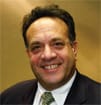Adjusting to Accommodate Retina Procedures
Learn about the management, investment and real costs of moving retina procedures to the ASC.
Mr. Sheppard: It's exciting to look at the new procedures that can be performed in an ASC. But make no mistake, this is a big change for everyone in the setting, and big changes always require number crunching. We've touched on how retina procedures will be moving to the ASC setting. How will this change affect these centers?
Evaluating Productivity
Mr. Sheffler: To me, the big challenge for retina procedures is productivity. I use cataract revenue per hour as the benchmark in our surgery centers. When our surgeons were using a 20-gauge vitrectomy system, 1-hour retina cases were the norm. Now, our retina groups have transitioned to a 23-gauge system, which gives us faster turnover. We're actually performing cases in as little as 30 minutes, sometimes even 25 minutes, without compromising outcomes. With the increased reimbursement, retina is a very attractive arena, and we're recruiting many retina groups.

| By spending money on retina technology, you get more productivity, so your revenue per hour increases. For example, the disposable instrumentation and packs for retina are expensive, but they help you turn the room quickly, so you can get the next patient in the room. — Lou Sheffler |
Mr. Brown: Your point with the 23-gauge equipment is dead on. With our experienced surgeons, it's revolutionary. Cases that typically took 45 minutes to an hour are down to 30 minutes.
Mr. Sheppard: That's an interesting point. When we think in terms of basic cataract surgery, doing three cases in one room in an hour gives us roughly $1,000 in Medicare reimbursement per case or $3,000 an hour. When the new retina rates are fully implemented, all of the common retina procedures will be in the same ambulatory payment classification (APC) group, 0672, which has a national average payment rate of $1,540.44. Retina procedures that could be performed in about 30 minutes include 67036, pars plana vitrectomy; 67041, vitrectomy for macular pucker; 67042, vitrectomy for macular hole and 67043, vitrectomy with membrane peel.
Training Staff
Mr. Sheppard: How are ASC staff members affected by the 2008 changes?
Ms. Harmer: It's a big shift. When you're dealing with staff members who might never have seen a retina procedure before, it's a totally different world. Certainly, training and development will be key, but there's also a necessary change in perspective.
Cataracts are fairly predictable. You can watch the clock and say, "This is what's happening now." With a retina case, that might not be so. We have to start from the administrative level with a supervisor who adjusts the scheduling, not only looking at the numbers and saying, "Assume 30 to 35 minutes per case, or two cases an hour," but also helping staff understand how cases may differ and that on certain days, you won't fit in two cases an hour. There's going to be a learning curve for all of us, but I think it's very exciting.
Margaret G. Acker, R.N., M.S.N.: Our surgeons have been performing retina procedures for about 2 years, and I underestimated staff training when we first began. We have very, very experienced cataract scrub nurses and circulators, but retina is a whole new world. I think we needed double the time that I originally planned to train people, get them comfortable with the surgical equipment and procedures, and get the surgeons comfortable with the scrub nurses. Most of our retina physicians want the same people working with them on every case. That kind of trust takes time to build.
Looking at Patient Selection
Mr. Sheppard: Which retina cases are practical or best suited to move from a hospital setting to an ASC?
Ms. Acker: We select cases that we estimate will take less than 30 minutes and for which we don't expect to need perfluorocarbon or silicone oil. Complicated and emergency cases belong in the hospital setting. Basically, you must choose your patients very carefully.
Balancing Quality and Costs
Mr. Sheppard: We seem to be fleshing out the picture in terms of physician time, staff training and patient selection. But there's a large investment in technology that's also involved. As we've said, we're looking at a 4-year phase-in to realize the full benefit of the reimbursement changes. If a surgery center wasn't performing retina cases previously, the investment in new technology could be as much as $200,000. For example, the center would have to purchase a vitrectomy machine, hand instruments that are more expensive than the typical cataract tray, an argon laser for endolaser procedures, cryotherapy equipment and, perhaps, new microscopes and lenses that provide an indirect view of the retina.
| ASC Pearl: Teamwork Managing an ASC is a challenge, but it also can be very satisfying. We've talked about providing quality care and dealing with new standards and regulations. All of this can be a bit overwhelming, but it's also an opportunity to challenge your staff and strengthen the team. As an administrator, don't try to take on all the responsibilities yourself. Work with your staff. Get their buy-in. Get the doctors' buy-in. Whether the challenge is new training or accreditation, the benefits can go far beyond getting a piece of paper that says you're over this hurdle. When you get everyone working together, you're ready for every challenge, and you've created a competitive, quality center. — Thomas Brown, J.D. |
How do you make that investment in retina technology, provide the highest possible quality care and still make a profit?
Mr. Brown: Our goal is to be well known as an ophthalmology center. To do that, we have to be the best in the community. Somebody asked why Hertz continues to be so successful, even though its prices are higher than the competitors'. It's because of the quality you get when you use Hertz. People pay more to get more, and we see that in our ophthalmology centers. We'll have to make some significant investments in equipment, but that's part of our commitment to provide quality service. It will sustain the surgery center in the long run.
Mr. Sheffler: In any business, I look at two indicators. First is the cost of the case in terms of physician time, nursing time and supplies. You can lower costs only so much before you begin losing quality.
The second indicator is top-line revenue, which is how many dollars you can put through the facility. By spending money on retina technology, you get more productivity, so your revenue per hour increases. For example, the disposable instrumentation and packs for retina are expensive, but they help you turn the room quickly, so you can get the next patient in the room.
Mr. Sheppard: The investment boosts productivity.
Mr. Sheffler: Yes. I compare the ASC business to the airline industry. When an airplane is sitting at the gate, it isn't making money. Our equivalent is an empty operating room. The airlines make money by filling planes with passengers and getting them up in the air as quickly as possible. They spend money on the things that make them money, and we can do the same thing by using medical supplies that raise productivity. It's the smart way to go because it increases topline revenue.
Staying Focused
Mr. Sheppard: The "spend money to make money" approach makes sense, but I think most people have an ingrained desire to save money. What's your take on this?
Ms. Harmer: You and Mr. Sheffler have given me a great lead-in for this. What is the true cost of a procedure? Most people don't know how to calculate the cost for a procedure. They only look at the surface level. Below that surface, you're paying for everything from utilities and trash removal to staff salaries, instrumentation and maintenance. And the decisions you make about those things impact your profit every day.

| Our goal is to be well known as an ophthalmology center. To do that, we have to be the best in the community. Somebody asked why Hertz continues to be successful, even though its prices are higher than the competitors'. It's because of the quality. People pay more to get more. — Thomas Brown, J.D. |
For example, you can't always compare dollar for dollar. In other words, if you need to choose between item A and item B, and item A is 30 cents cheaper, don't assume item A is a good deal. Even if the two items are equally good, you might end up with a huge minimum order of item A sitting in inventory instead of a modest quantity of item B that you're turning into profit faster. You're making less money because you have unused inventory.
Worse, I often see people trying to stretch a dollar by sterilizing and reusing disposable instruments. If the instrument is approved for single use, a practice is assuming the product liability by reusing it, because the manufacturer can't direct the user on how to re-sterilize the instrument. That's an almost incalculable addition to the cost of that procedure.
Mr. Sheppard: So, it sounds like in both of those cases, you're dealing with people who need to pull back and carefully evaluate their decisions in terms of the larger picture. That's good advice.
I think we've covered some of the key issues with retina procedures. Next, we'll take a look at how premium IOLs fit into the picture. OM








